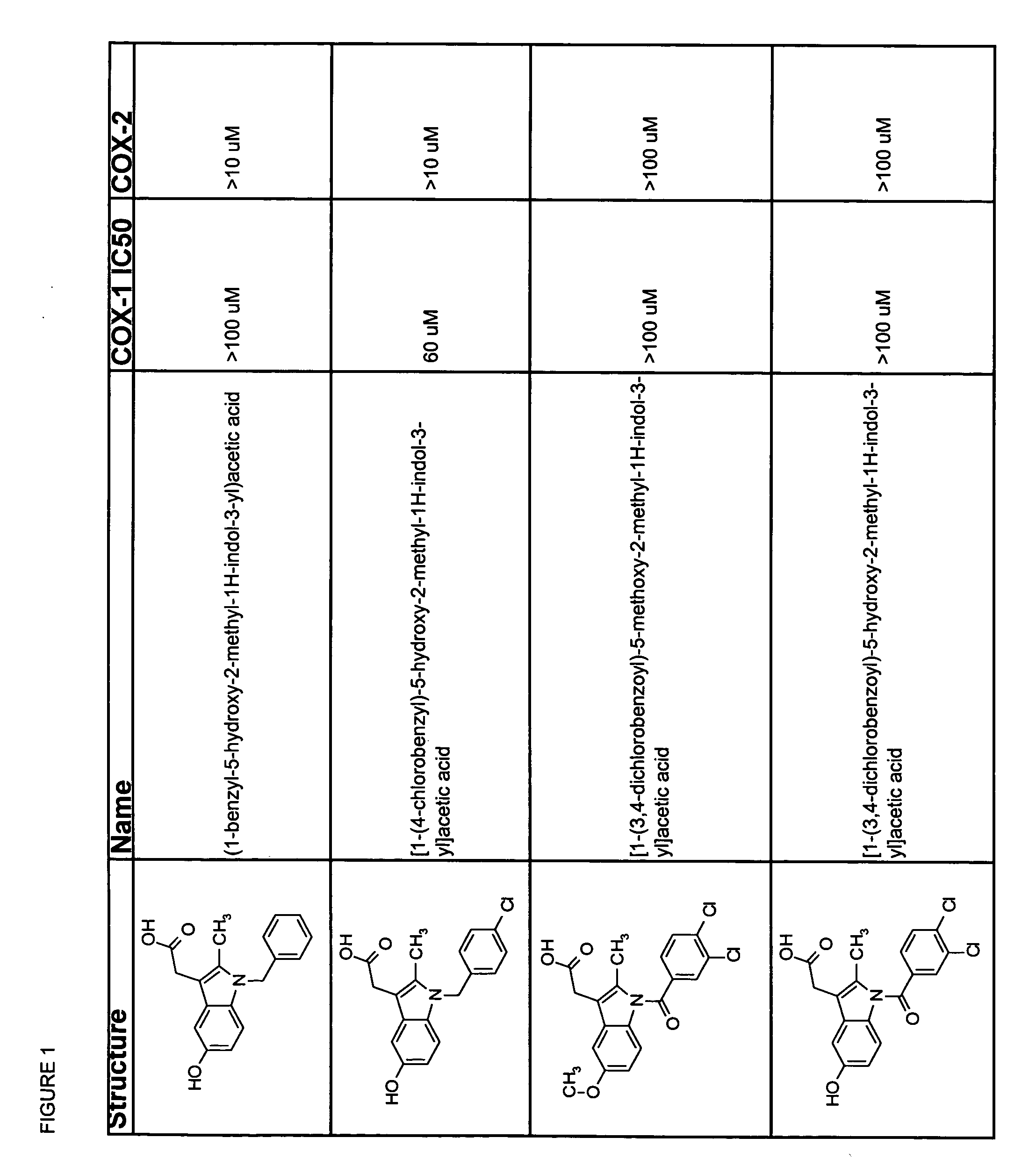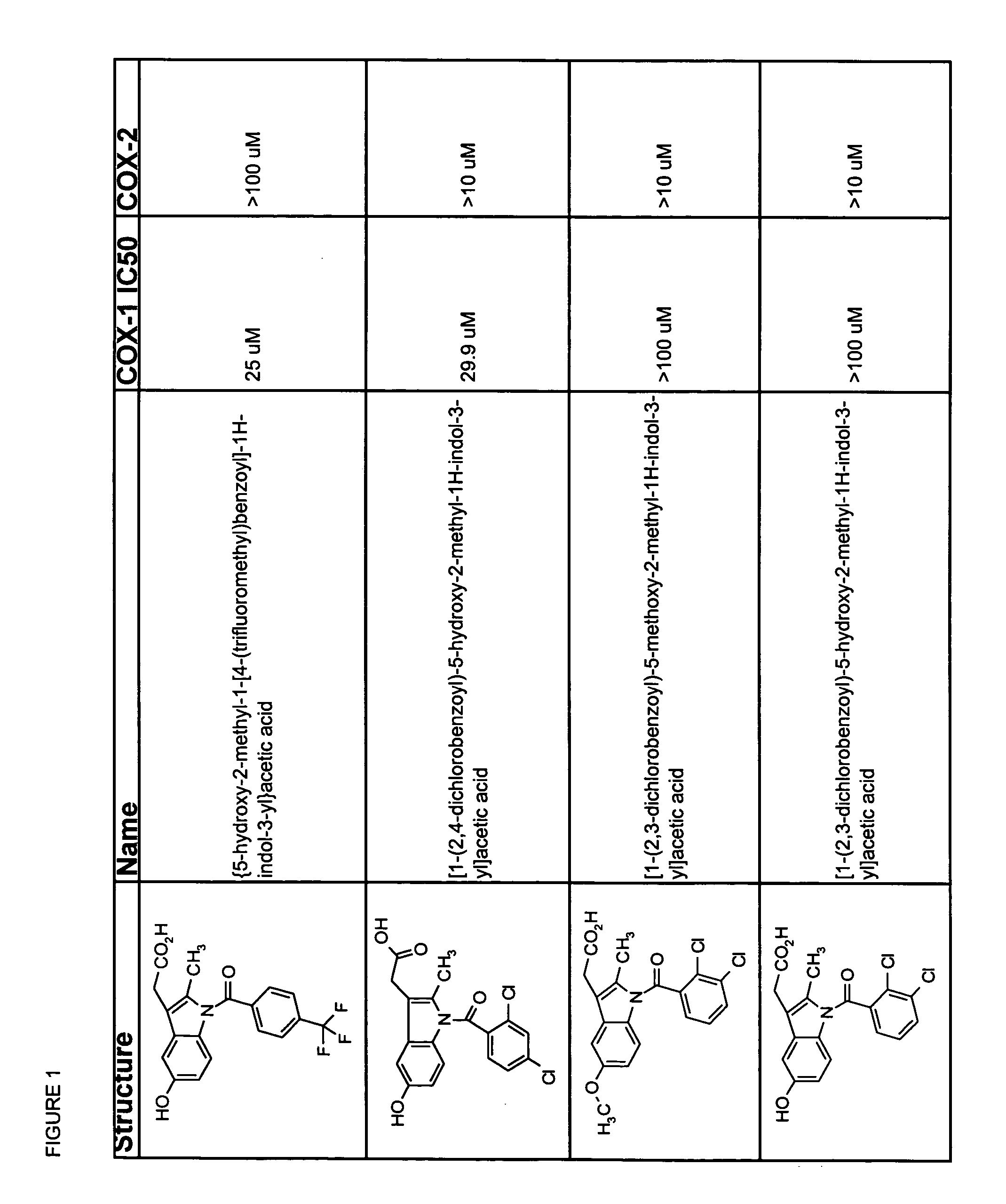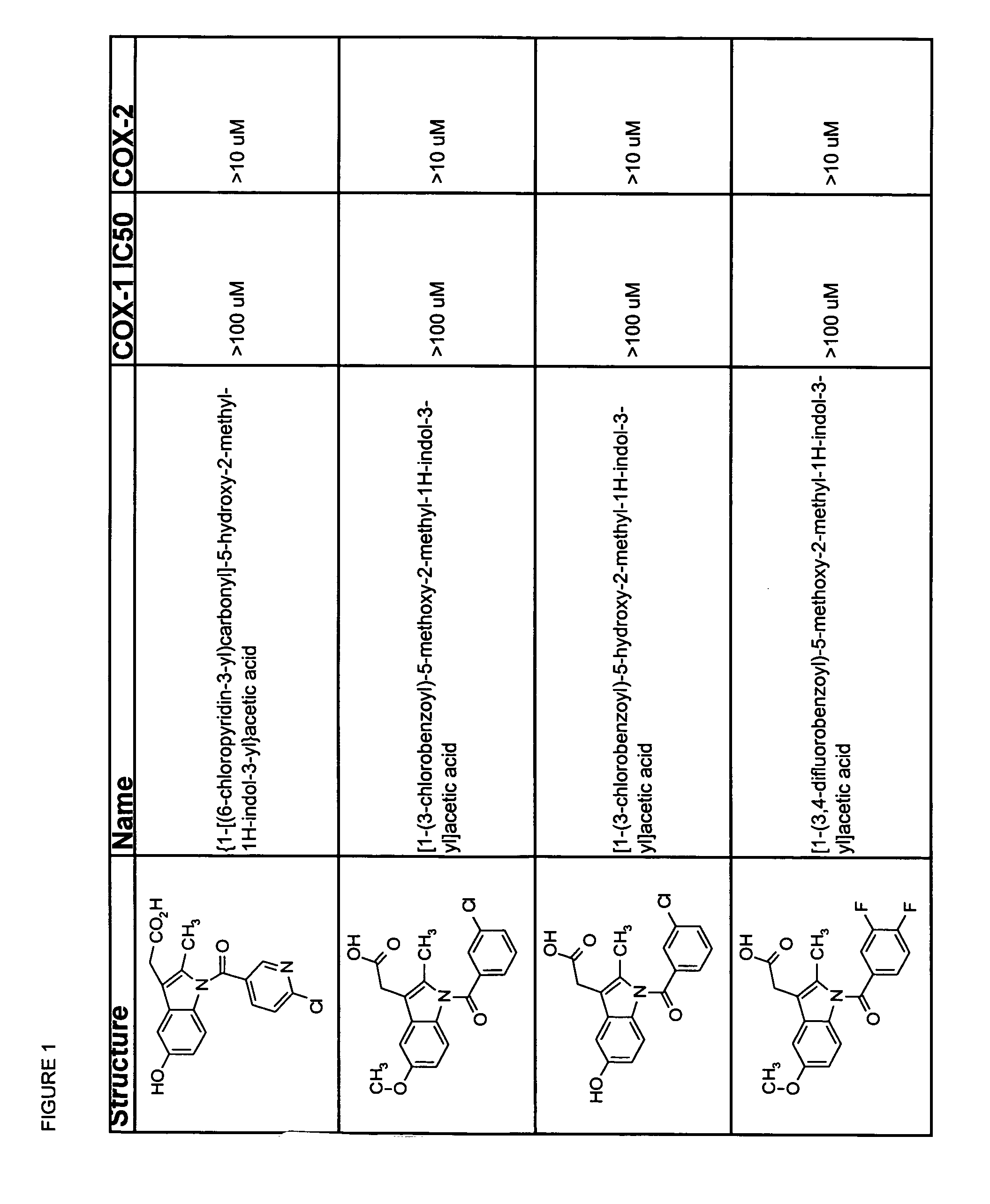Methods for the protection of memory and cognition
a memory and cognition technology, applied in the field of methods for protecting memory and cognition, can solve problems such as impairment of cognitive ability and memory
- Summary
- Abstract
- Description
- Claims
- Application Information
AI Technical Summary
Benefits of technology
Problems solved by technology
Method used
Image
Examples
Embodiment Construction
Subsequent to indomethacin (I) (Shen et al. 1963 J. Am Chem. Soc. 85:488) administration, the unchanged parent compound, the desmethyl metabolite, the desbenzoyl metabolite and the desmethy-desbenzoyl metabolite can be found in plasma (Strachman et al. 1964 J. Am Chem. Soc. 8:799), all in their unconjugated forms (Harman et al. 1964 J. Pharmocol Exp Therap 143:215).
Useful metabolites and derivatives of indomethacin are those that inhibit one or more cyclooxygenases (e.g., COX-1 and COX-2) to a lesser extent than does indomethacin. Thus, the compounds have an IC50 for COX-1 and / or COX-2 which is at least 2-, 5-, 10-, 15-, 20-, 100-, 500-, 1,000-fold greater than that of indomethacin. Particularly desirable are compounds that do not measurably inhibit COX-1 and / or COX-2.
The structure activity relationships of indomethacin derivatives have been established in the context of their ability to inhibit both COX-1 and COX-2 (Black et al. 1997 Advances in Experimental Medicine and Biolo...
PUM
| Property | Measurement | Unit |
|---|---|---|
| pharmaceutical composition | aaaaa | aaaaa |
| composition | aaaaa | aaaaa |
| frequency | aaaaa | aaaaa |
Abstract
Description
Claims
Application Information
 Login to View More
Login to View More - R&D
- Intellectual Property
- Life Sciences
- Materials
- Tech Scout
- Unparalleled Data Quality
- Higher Quality Content
- 60% Fewer Hallucinations
Browse by: Latest US Patents, China's latest patents, Technical Efficacy Thesaurus, Application Domain, Technology Topic, Popular Technical Reports.
© 2025 PatSnap. All rights reserved.Legal|Privacy policy|Modern Slavery Act Transparency Statement|Sitemap|About US| Contact US: help@patsnap.com



